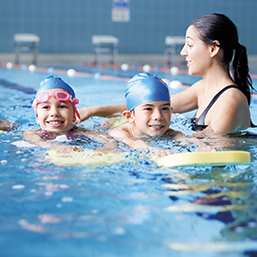
Now that the back-to-school chaos has pretty much settled, families are starting to gear up for the winter months. More time indoors during the cold and shorter days means more challenges when it comes to staying healthy, both physically and mentally. Anticipating and planning for these challenges can make for a smoother transition and better health.
\n \nRespiratory infection rates increase rapidly in colder months since we spend more time indoors and are in closer contact with one another. These infections are spread primarily by coughing and sneezing. They can also happen when a person touches a surface that has infected fluid on it, then touches their eye, nose, or mouth, allowing the virus to enter their bodies.
\nColds are the most common respiratory infection in wintertime, with many children coming down with one in the first month back at school then getting them as often as every six to eight weeks through the winter. While colds are relatively mild illnesses, influenza (flu) is more severe. It usually causes fever, cough, body aches, extreme tiredness, and headache. It can also lead to pneumonia, a serious lung infection. In Alberta, during the 2024/2025 influenza season, 543 children (the statistics include people up to the age of 19) required hospitalization for influenza illness. Of those, 47 required intensive care (ICU), and one died. People who are at the greatest risk of severe illness from the flu are children under the age of five, pregnant women, and people 65 or older.
\nGetting the flu vaccine every fall is highly recommended for all people aged six months and older. The vaccine is more effective some years than others, although even in years when it is less effective it can help keep you from getting severely ill. In Alberta, children aged six months to five years are vaccinated at Alberta Health Services public health clinics. Parents can book these appointments by either phoning 811 (Health Link) or booking online (search “Alberta immunization booking”). Children aged five and older, as well as adults, can be vaccinated at pharmacies. Appointments are recommended, however, many pharmacies will take walk-ins as well.
\nWhen a child has been home sick, they should not return to school or daycare until they have had no fever for at least 24 hours and their symptoms are getting better. Use the recuperation period as a time to reinforce respiratory hygiene measures such as coughing and sneezing into a tissue (or their elbow}, throwing the tissue into the trash, then washing their hands or using hand sanitizer. Remind them to not touch their eyes, nose, or mouth when in public places.
\nKeeping children active during the winter months is important for their physical and mental health.
\nWhen the weather is not too harsh, outdoor activities could include:
\nIndoor choices for exercise include:
\nSome children’s brains, like adult brains, react to the shorter daylight hours of winter with changes in chemicals that affect mood. Some may experience symptoms of depression such as:
\nOne of the first steps in managing symptoms is to get as much light exposure as early in the morning as possible. On school days, this may include walking to school, going outside during school breaks, or at least being close to a window in the school whenever possible. Even on cloudy days, this is still helpful. At home, opening the curtains as soon as the sun rises, going outdoors to play, or eating and playing in rooms in the house that get the most daylight in the morning can be helpful. Any amount of exposure to daylight is helpful, but it would be reasonable to aim for 30 minutes or longer.
\nSAD light therapy has been used successfully in adults, but has not been studied much in children and teens. If your child has symptoms of depression that last longer than two weeks, it is a good idea to discuss this with their primary care provider.
\nWinter can definitely present challenges to the physical and mental well-being of our children, however, with some preparation and awareness, there are several things that parents can do to manage them. Here’s to a healthy snow season!
\n\n
Dr. Cathryn Kuzyk has been a family physician for over four decades and is loving being grandma to five. She currently works part-time in family practice.
\n\n
See our related articles:
\nCalgary’s Child Magazine © 2025 Calgary’s Child